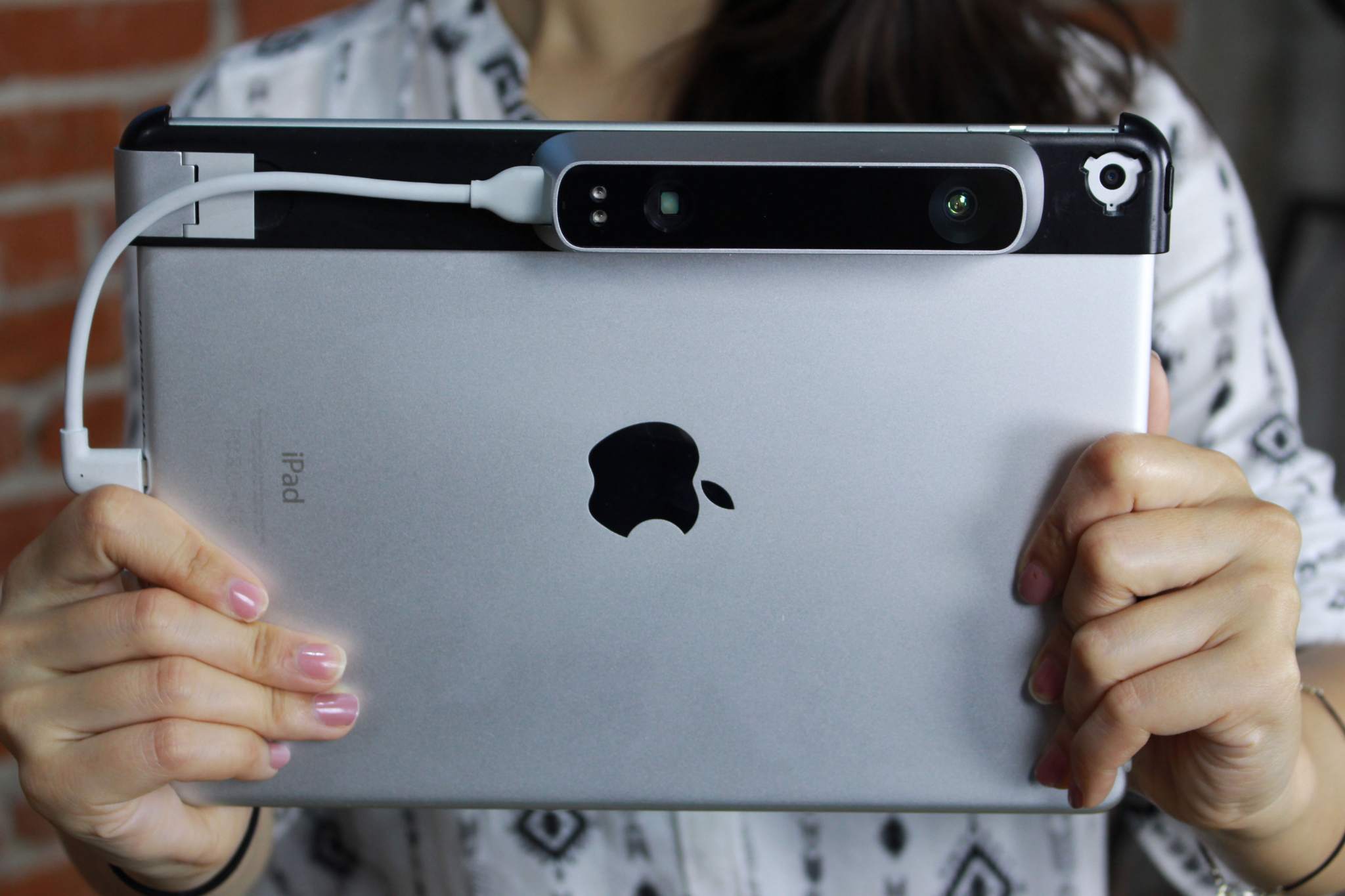Colorado based startup Occipital Inc. have just unveiled a new iPad app, Canvas, that will enable an iPad to be transformed into a fully functioning 3D scanner. The company made waves in 2013 when they first released their structure sensor – the iPad attachment that captures 3D dimensions of spaces and objects, so an app optimized for use with Structure SDK has been a ling time coming.
The concept is the perfect tool for interior designers, architects, and contractors, as well as DIY enthusiasts and people interested generally in home improvement. The application, with the sensor and accessories, means a full scan of a house can take less than an hour for a relatively low price. Furthermore this application is even more useful when combined with Occipital’s ‘Scan to CAD’ service. Occpital are offering the opportunity for users to have their scans converted into CAD files, for a price of $29 per room.

In order to fully take advantage of this system there are a number of components required. Firstly, an iPad, then the sensor, the bracket that holds the sensor onto the iPad, the new Canvas app and then also the ‘Scan to CAD’ service. The sum of these components is not cheap either coming to roughly around $1000 for the iPad and the sensor with mount. However, while expensive the savings come through time-efficiency and ease of use. This is something that Alex Schiff, Occipital product manager, is keen to point out:
“Most remodeling projects — you’re looking at seven hours of measurement time, and it’s even more time to take those measurements and build a model. Whereas with Canvas, you take the scan, you upload it, and two days later you have something that’s ready to design. So we’re saving easily $1,000 per project and hours and hours of people’s time.”
Other innovations in the world of 3D scanning include Scan in a Box which is another scanning product steered towards ease of use and accessibility. Elsewhere in the field of architecture, 3D printing seems to be gaining ground in a variety of different ways of creating structures and buildings. The development of 3D scanning devices will continue to push developments for 3D printing in architecture. The ability to obtain 3D scans of a house or structure so easily is only going to strengthen the 3D printing architecture market.
Featured image shows the 3D scanning process. Image via Occipital.



